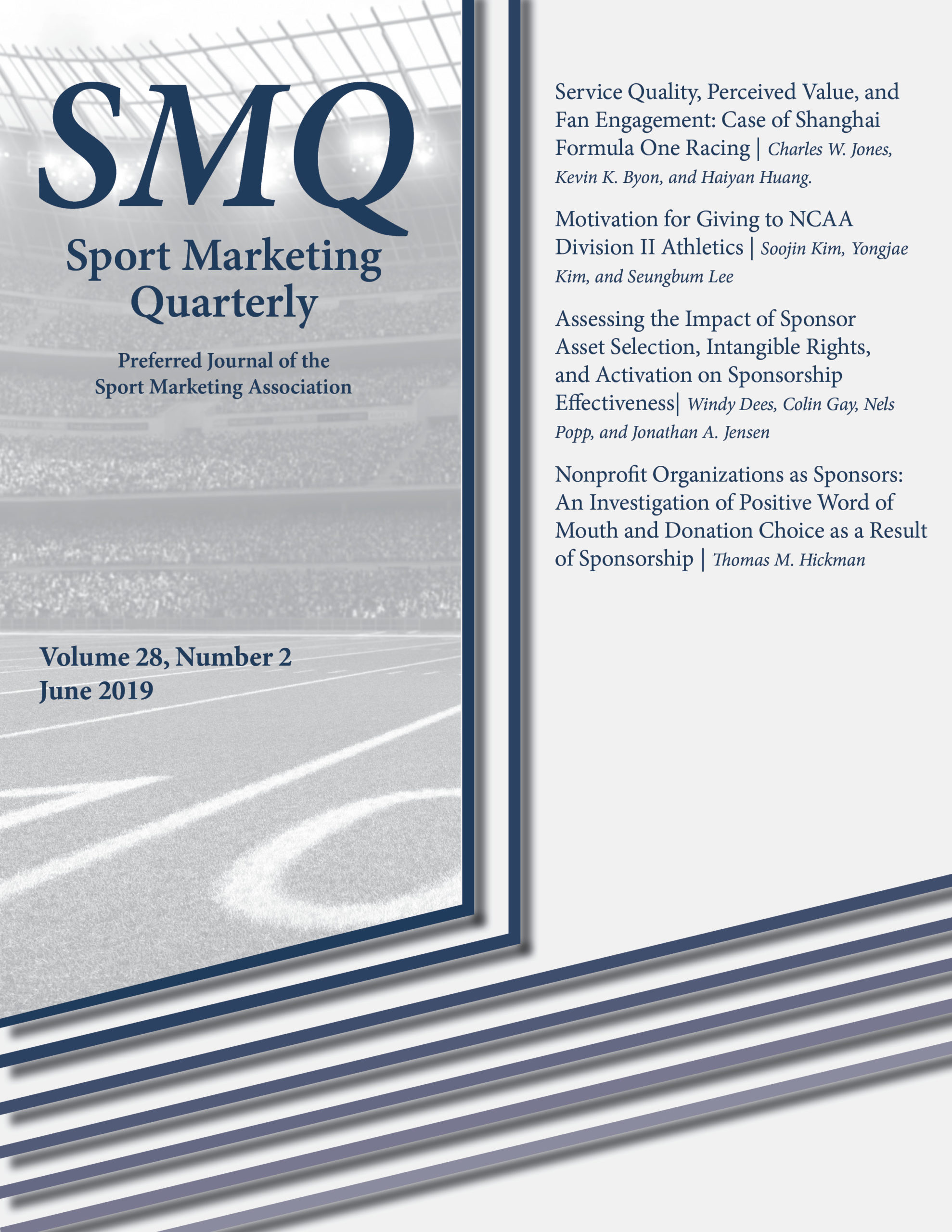Sports Marketing Quarterly
Issue 28:2 – June, 2019
Issue 28:2 – June, 2019

Charles W. Jones, Kevin K. Byon and Haiyan Huang
The purpose of this study is to examine the influence of controllable service quality factors as firm-based antecedents to two dimensions of customer engagement behavior among Formula One racing spectators. This study uses the theory of customer engagement (van Doorn et al., 2010) as a guiding framework and applies Bettencourt’s (1997) model of customer voluntary performance (CVP) to examine how perceptions of ancillary services and value can prompt management cooperation and prosocial behavior among spectators of a recurring mega sport event. Findings suggest that spectator interactions with event personnel and the physical environment can positively impact consumer perceptions of value and lead to greater fan engagement. Event organizers should focus management and marketing efforts on the utilitarian value (price/value for money) associated with attending a mega event and promote physical environment factors that can enhance the overall event experience.
Soojin Kim, Yongjae Kim and Seungbum Lee
The purpose of this study is to identify the prominent athletic donor motives in an NCAA Division II athletic program, employing the scale of Athletic Donor Motivation (Ko, Rhee, Walker, & Lee, 2014), and to assess the impact of the identified motives on giving behavior. A total of two hundred and thirty two actual donors housed in an NCAA Division II university were used for analysis. To test the psychometric properties of the measurement and examine the relationship between donation motives and actual donation behavior, a confirmatory factor analysis and a structural equation modeling were employed, respectively. Results of this study indicated that vicarious achievement, philanthropy, commitment, and power are the four primary motivational factors, while tangible benefits, which was consistently found as an important motive in prior studies was found low. Such findings highlight key differences and suggest different salient motivations exist requiring particular attention in NCAA Division II context.
Windy Dees, Colin Gay, Nels Popp and Jonathan A. Jensen
Brand awareness is frequently cited as a main objective for firms engaging in sponsorship and is often used as a measurement of sponsorship effectiveness. Meanwhile, sport sponsorship has evolved from static signage and one-way messaging to include an exhaustive list of assets and intangible rights, along with extensive on-site activation, each with a specific incremental cost. Yet, it is unknown whether the mix of assets and rights firms may choose to purchase, along with an investment in activation, impacts their ability to generate greater sponsorship effectiveness in the form of brand awareness. While controlling for duration as a sponsor, results indicate that the selection of videoboard and LED in-stadium advertising, as well as on-site activation, led to increased brand awareness for sponsors. Moreover, category exclusivity and official status designation were also statistically significant predictors of brand recognition, with exclusivity doubling the probability that a sponsor is recognized by consumers.
Thomas M. Hickman
This study surveyed fans of a college football team and found that nonprofit organizations are positioned to benefit from sponsorship through increased positive word of mouth and donations by fans of the team. Specifically, fan identification, favorability toward the sponsorship, and perception of quality of the nonprofit organization were all predictive of higher levels of positive word of mouth. Cumulatively, these variables led to respondents selecting the sponsoring nonprofit versus a similar non-sponsoring nonprofit in the donation choice phase of the study. This article also examines the negative consequences of sponsorship by investigating the role of a perception of cynicism toward sponsorship. It is shown that as cynicism toward sponsorship increases, positive word of mouth and choosing the nonprofit as the donation recipient both decrease. Overall, encouraging results are shown for nonprofits serving as sponsors as measured by positive word of mouth and donation choice. Implications of the findings and future research agendas are discussed.